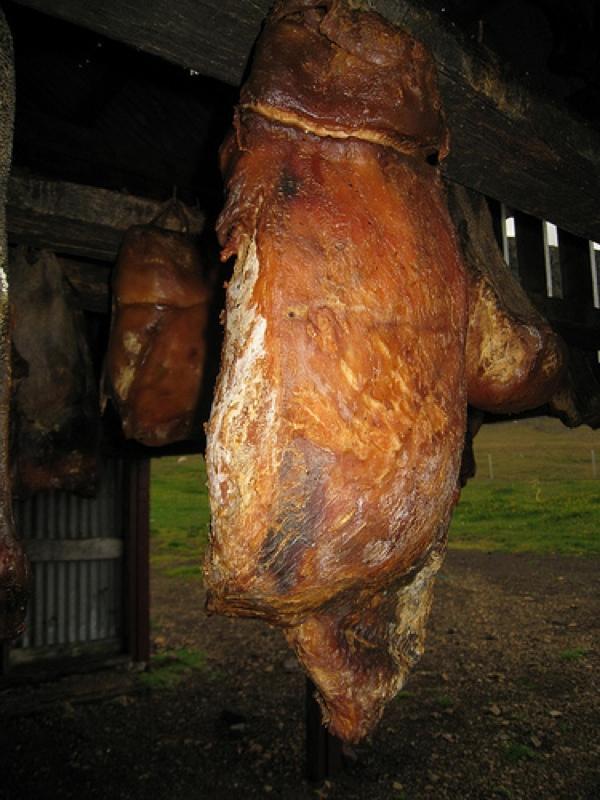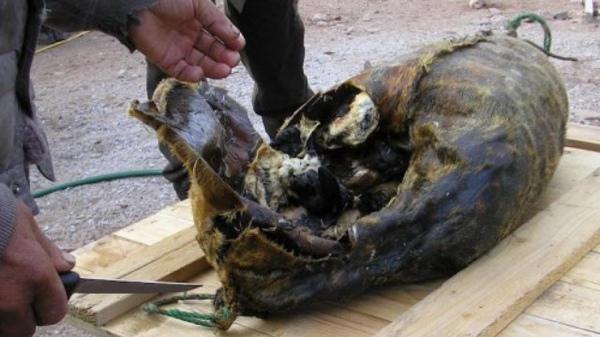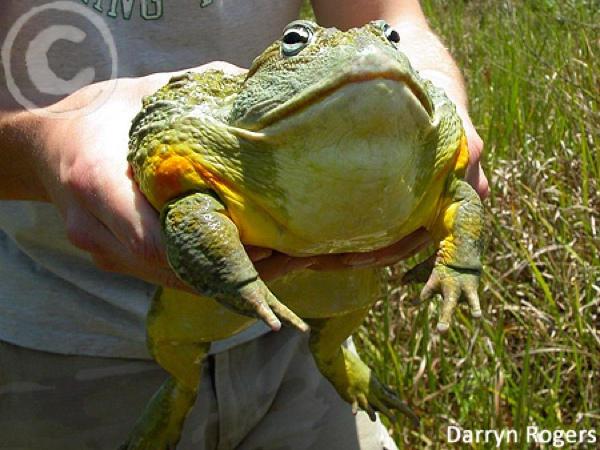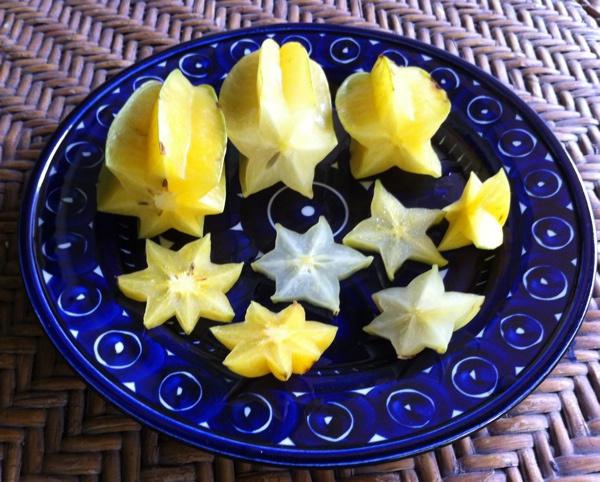2572
The most dangerous products
When we look at our food, we are not too reflect on it, and in fact sometimes note that it is normal. However, there are some foods that are so unusual and dangerous that they can fight off any appetite. In this collection you will find poisonous shark meat, fruit and neurotoxic salad frogs bulls ....
1. spit

Greenland sharks are dangerous not only during the voyage by canoe, but also for the stomach. The fact that the Greenland shark not have the ability to urinate, resulting in a huge amount of ammonia and trimethyl oxide excreted through the tissues of sharks. Enterprising residents of Greenland developed a traditional dish known as spit, which is a seasoned shark meat. In addition, the smell of shark meat is almost unbearable, the consumer is faced with a potential threat of injury, poisoning and diseases of the poisons that are still present in the meat.
2. Kivak

Kivak is extremely difficult for the stomach and dangerous food. Ancient Icelandic food known as Kivak consists of fermented (in fact, corrupt) small seabird corpses - guillemots and gulls. Birds caught in nets and sew sealskin seasoned before bury up to three years. Birds of the seal slowly marinated fat in cold arctic tundra. As a result, the food when it finally dug out, not only is a bit disgusting, but can be deadly because of the possibility of botulism. Last meal famous biologist and researcher was Kivak.
3. African-poisonous frogs bulls

African poisonous frogs, bulls are discussed in this article, as positioned as a delicacy in the African country of Namibia. Nevertheless, meat frog comprises potent toxin known as Oshiketakata, which can lead to renal failure, muscle damage and even death. Recommendations for handling frogs include their favorites in a pot with special boards, which allegedly "neutralize" the toxin. The level of poison is believed to be lower at certain times of the year when food is acceptable for the brave or perhaps foolhardy, if it comes to handling wooden planks. We can not guarantee that the consumer will not croak ...
4. Steamed Asian bats

There are some products that just do not lend themselves to the imagination. Perhaps the most illogical food is Asian soup bats, which contains an entire bat in a bowl of soup after boiling chicken broth. Bat cut with a knife and fork, and then eat soup spoon, together with the internal bat. At present the dish hair and membrane bat wings. The dish is quite tasty, but we are forced to conclude that this is a very unappetizing, especially the kind of bat. Bats are able to tolerate a number of human infectious diseases, in addition, this practice is considered wrong in terms of many environmental organizations.
5. Carambola

Carambola is the most seductive and innocent-looking food on this list. While other dishes can be difficult or disturbing, carambola just beautiful. Asian plant has five faces that form a perfect star, when the fruit is served sliced crosswise. After you eat this plant, stars can begin to spin around your head, as this fruit contains neurotoxins. Carambola also contains an enormous amount of oxalic acid. This fruit affects those with weak kidneys, in exceptional cases is fatal.
6. octopus

Number of exotic Japanese and Korean restaurants, including those seeking to attract Western tourists, offers sushi, which is not only raw materials, but also partly alive. Miniature octopuses are brought in sushi bars alive and quickly cut into two parts. When serving on a plate with soy sauce they still writhe because of reflex tentacle as invertebrate has a partially decentralized nervous system. Several accidents deaths occur as a result of that disembodied tentacles blocked airways visitors.
7. Eggs gastropods

Eggs of sturgeon caviar, known as is a popular dish in Russia, and snails are a popular French dish. Extreme entrepreneurs engaged in the popularization of the new dishes delicacy known as "cochlear caviar", which consists of raw eggs land snails. Eggs served on the hard-boiled quail eggs, or with grilled vegetables and exotic salads. They come neatly packaged in small pots with a wonderful seasoning that brings the taste of fresh earth. Eggs do not cook, so have been reported deaths from consumption of raw snails infected brain parasites.
8. Snake Burger

In the south-western United States, rattlesnakes, not only fear, but also eat. Supporters of the "snake food" note that snake meat is very similar to chicken, due to the fact that reptiles are the ancestors of birds. This is an amazing southern dish ... very authentic ... In Southeast Asia cafes are actively marketing their own snacks from the snake as a snake hamburgers made from cobras and other snakes. Meat snakes completely safe to eat, as the toxin is not distributed in the tissues. After separation from the skin and hot, you'd never guess that does not eat beef or chicken.
9. Internal

The insides of the digestive, reproductive and nervous systems of some animals underlie some grotesque, but surprisingly popular dishes. Many dishes using membrane of the stomach, intestines and even cows and sheep testicles. "Offal" should be thoroughly cleaned as frequently used questionable parts of the body, but can be surprisingly neatly filed in eateries. Lamb testicles are among the most popular and served breaded and bull testicles - marinated in a sauce. In Europe, may be filed with the dish known as "offal", which is made from pig intestines. Sheep and fish eyes also appear in the menu. Risks fatal infections from parasites led to the adoption of certain provisions of the consumption of internal and sheep.
10. Crow Pie

Tell someone to "eat crow" this is not fiction or even insulting if you are in Lithuania. Crow pie is a traditional dish of poultry meat-based carrion crows. Birds are caught in a fairly young age, are prepared on high heat in butter and then served with a plate of roasted vegetables. Meat is rumored to act as an aphrodisiac, and allegedly used to "control" the number of crows. The Ravens are a traditional part of the Lithuanian food, but consumption has declined sharply during the Soviet occupation of the country. Concerns have been raised about the possibility of contracting diseases from scavengers.
1. spit

Greenland sharks are dangerous not only during the voyage by canoe, but also for the stomach. The fact that the Greenland shark not have the ability to urinate, resulting in a huge amount of ammonia and trimethyl oxide excreted through the tissues of sharks. Enterprising residents of Greenland developed a traditional dish known as spit, which is a seasoned shark meat. In addition, the smell of shark meat is almost unbearable, the consumer is faced with a potential threat of injury, poisoning and diseases of the poisons that are still present in the meat.
2. Kivak

Kivak is extremely difficult for the stomach and dangerous food. Ancient Icelandic food known as Kivak consists of fermented (in fact, corrupt) small seabird corpses - guillemots and gulls. Birds caught in nets and sew sealskin seasoned before bury up to three years. Birds of the seal slowly marinated fat in cold arctic tundra. As a result, the food when it finally dug out, not only is a bit disgusting, but can be deadly because of the possibility of botulism. Last meal famous biologist and researcher was Kivak.
3. African-poisonous frogs bulls

African poisonous frogs, bulls are discussed in this article, as positioned as a delicacy in the African country of Namibia. Nevertheless, meat frog comprises potent toxin known as Oshiketakata, which can lead to renal failure, muscle damage and even death. Recommendations for handling frogs include their favorites in a pot with special boards, which allegedly "neutralize" the toxin. The level of poison is believed to be lower at certain times of the year when food is acceptable for the brave or perhaps foolhardy, if it comes to handling wooden planks. We can not guarantee that the consumer will not croak ...
4. Steamed Asian bats

There are some products that just do not lend themselves to the imagination. Perhaps the most illogical food is Asian soup bats, which contains an entire bat in a bowl of soup after boiling chicken broth. Bat cut with a knife and fork, and then eat soup spoon, together with the internal bat. At present the dish hair and membrane bat wings. The dish is quite tasty, but we are forced to conclude that this is a very unappetizing, especially the kind of bat. Bats are able to tolerate a number of human infectious diseases, in addition, this practice is considered wrong in terms of many environmental organizations.
5. Carambola

Carambola is the most seductive and innocent-looking food on this list. While other dishes can be difficult or disturbing, carambola just beautiful. Asian plant has five faces that form a perfect star, when the fruit is served sliced crosswise. After you eat this plant, stars can begin to spin around your head, as this fruit contains neurotoxins. Carambola also contains an enormous amount of oxalic acid. This fruit affects those with weak kidneys, in exceptional cases is fatal.
6. octopus

Number of exotic Japanese and Korean restaurants, including those seeking to attract Western tourists, offers sushi, which is not only raw materials, but also partly alive. Miniature octopuses are brought in sushi bars alive and quickly cut into two parts. When serving on a plate with soy sauce they still writhe because of reflex tentacle as invertebrate has a partially decentralized nervous system. Several accidents deaths occur as a result of that disembodied tentacles blocked airways visitors.
7. Eggs gastropods

Eggs of sturgeon caviar, known as is a popular dish in Russia, and snails are a popular French dish. Extreme entrepreneurs engaged in the popularization of the new dishes delicacy known as "cochlear caviar", which consists of raw eggs land snails. Eggs served on the hard-boiled quail eggs, or with grilled vegetables and exotic salads. They come neatly packaged in small pots with a wonderful seasoning that brings the taste of fresh earth. Eggs do not cook, so have been reported deaths from consumption of raw snails infected brain parasites.
8. Snake Burger

In the south-western United States, rattlesnakes, not only fear, but also eat. Supporters of the "snake food" note that snake meat is very similar to chicken, due to the fact that reptiles are the ancestors of birds. This is an amazing southern dish ... very authentic ... In Southeast Asia cafes are actively marketing their own snacks from the snake as a snake hamburgers made from cobras and other snakes. Meat snakes completely safe to eat, as the toxin is not distributed in the tissues. After separation from the skin and hot, you'd never guess that does not eat beef or chicken.
9. Internal

The insides of the digestive, reproductive and nervous systems of some animals underlie some grotesque, but surprisingly popular dishes. Many dishes using membrane of the stomach, intestines and even cows and sheep testicles. "Offal" should be thoroughly cleaned as frequently used questionable parts of the body, but can be surprisingly neatly filed in eateries. Lamb testicles are among the most popular and served breaded and bull testicles - marinated in a sauce. In Europe, may be filed with the dish known as "offal", which is made from pig intestines. Sheep and fish eyes also appear in the menu. Risks fatal infections from parasites led to the adoption of certain provisions of the consumption of internal and sheep.
10. Crow Pie

Tell someone to "eat crow" this is not fiction or even insulting if you are in Lithuania. Crow pie is a traditional dish of poultry meat-based carrion crows. Birds are caught in a fairly young age, are prepared on high heat in butter and then served with a plate of roasted vegetables. Meat is rumored to act as an aphrodisiac, and allegedly used to "control" the number of crows. The Ravens are a traditional part of the Lithuanian food, but consumption has declined sharply during the Soviet occupation of the country. Concerns have been raised about the possibility of contracting diseases from scavengers.























